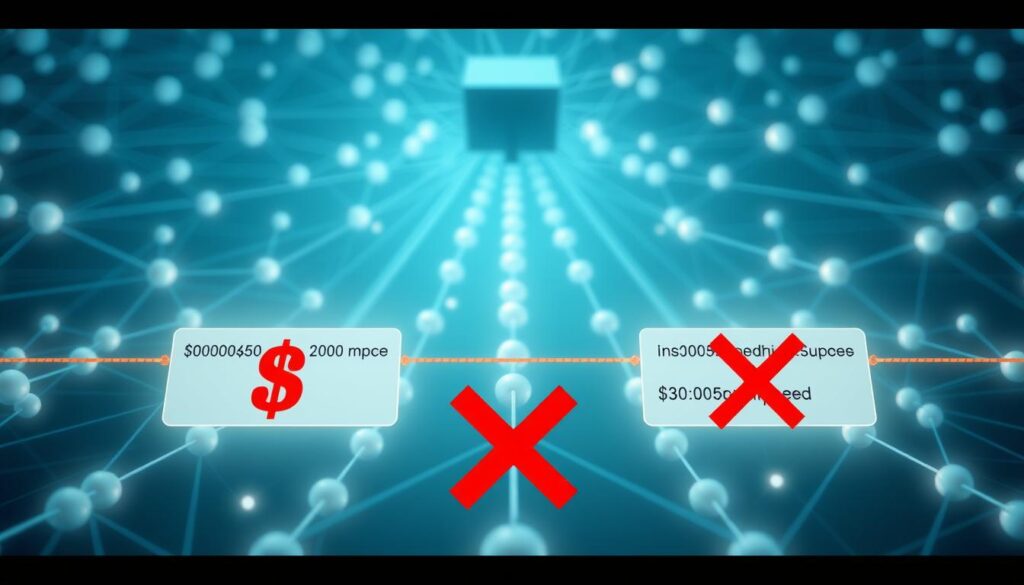Now Reading: Understanding Blockchain Scalability Solutions and Challenges
- 01
Understanding Blockchain Scalability Solutions and Challenges
Understanding Blockchain Scalability Solutions and Challenges

The journey of distributed ledger technology began in the early 1990s when researchers Stuart Haber and W. Scott Stornetta first proposed a cryptographically secure chain of blocks. This foundational work paved the way for what would become a revolutionary technology.
In 2009, the pseudonymous Satoshi Nakamoto brought this concept to life with Bitcoin. This pioneering application demonstrated a decentralized, transparent, and secure system that could operate without central authority. The technology showed immense promise across various industries.
However, as adoption grows, networks face significant performance hurdles. The very architecture that provides security and decentralization creates limitations on transaction capacity. This tension between decentralization and performance represents one of the most critical barriers to widespread implementation.
Current developments focus on enhancing network capabilities through various approaches. These include protocol-level enhancements and off-chain mechanisms that work alongside main networks. The goal is to achieve transaction speeds that can compete with traditional financial systems.
Addressing these performance issues holds tremendous business potential. Some projections suggest that properly scaled distributed ledger systems could generate trillions of dollars in business value by 2030. Success depends on measuring key metrics like transaction speed, confirmation times, and network sustainability.
Key Takeaways
- Distributed ledger technology has evolved from 1990s cryptographic research to modern implementations
- Bitcoin’s 2009 launch demonstrated practical decentralized system capabilities
- Network performance limitations present significant adoption barriers
- Multiple technical approaches aim to enhance transaction capacity
- Solving performance issues could unlock substantial business value
- Success depends on improving key metrics like speed and confirmation times
Introduction to Blockchain Technology and Scalability
Peer-to-peer verification systems represent one of the most significant technological shifts in recent decades. These networks operate without central authority, creating transparent and immutable records.
The Evolution of Blockchain
Digital ledger technology has progressed through several key phases. Early work by David Chaum laid groundwork for distributed systems. Haber and Stornetta later proposed cryptographically secure chains.
Satoshi Nakamoto’s Bitcoin implementation in 2009 demonstrated practical decentralized applications. Ethereum’s introduction of smart contracts expanded functionality dramatically. Various platforms now serve specialized use cases.
Why Scalability Matters in a Rapidly Growing Network
Transaction volume has exploded across major networks. Ethereum processed just 3,000 daily transactions in 2015. By 2018, this grew to over one million daily transactions.
This growth creates significant strain on network capacity. Current processing speeds limit practical applications. The performance gap becomes clear when comparing systems:
| System | Transactions Per Second | Network Type |
|---|---|---|
| Bitcoin | 7 | Decentralized |
| Ethereum | 20 | Decentralized |
| Visa | 24,000 | Centralized |
Business value depends heavily on solving these performance issues. Gartner projects $176 billion in value by 2025. This could reach $3.1 trillion by 2030 with proper blockchain scalability solutions.
Technical Challenges in Blockchain Scalability
Every participant in a distributed system must validate each operation, creating a natural bottleneck for transaction processing speed. This fundamental requirement ensures security but severely limits throughput.

Transaction Throughput and Block Size Limitations
Bitcoin’s 1MB block size and 10-minute creation time restrict its capacity to about 7 transactions per second. Ethereum uses gas limits with faster 7-second blocks, achieving around 20 transactions per second.
Simply increasing block size or reducing creation time creates new problems. Larger blocks take longer to propagate, increasing orphan rates. Faster blocks require more bandwidth and storage capacity.
| Parameter | Bitcoin | Ethereum |
|---|---|---|
| Block Size | 1MB | Gas Limit Based |
| Block Time | 10 minutes | 7 seconds |
| Max Throughput | 7 TPS | 20 TPS |
| Peak Congestion | 200,000+ pending | Similar backlogs |
Network Congestion and Security Trade-offs
When demand exceeds capacity, networks experience severe congestion. Bitcoin has seen over 200,000 unconfirmed transactions with fees reaching $60. Confirmation times can exceed one day during peak usage.
Each node must store the entire blockchain state and validate every transaction. This requires substantial processing power and storage, making participation expensive. The system’s redundancy creates security but limits scalability.
Modifications to increase throughput often compromise security. Changes can reduce hash rate distribution or create consensus vulnerabilities. Finding the right balance remains the central challenge for blockchain network development.
Economic Impacts and Network Barriers
Financial constraints represent one of the most immediate barriers to widespread implementation of decentralized networks. When systems face capacity limitations, economic pressures create significant accessibility issues.

High Transaction Fees and Cost Implications
Network congestion directly impacts user costs through increased fees. During peak usage periods, users compete for limited block space through fee auctions.
Bitcoin experienced average fees reaching $60 per transaction in January 2018. This pricing structure effectively excludes small-value transfers and everyday users.
Beyond direct fees, energy consumption presents substantial environmental concerns. Proof of Work systems consume electricity comparable to entire countries like Switzerland.
| Network | Peak Fee | Date | Impact |
|---|---|---|---|
| Bitcoin | $60 | January 2018 | Excluded small transactions |
| Ethereum | $40 | 2021 Bull Run | DeFi activity limited |
| Current Average | $2-15 | 2024 | Still prohibitive for micro-payments |
Centralization Risks in Decentralized Systems
Economic barriers create unintended centralization pressures. Only well-funded entities can afford mining infrastructure or node operation costs.
This concentration of control undermines the distributed nature of these systems. The very security model depends on widespread participation.
High costs prevent serving unbanked populations and microtransaction models. These limitations hinder mass adoption despite technological potential.
Blockchain Scalability Solutions and Challenges
At the heart of distributed ledger performance issues lies a fundamental architectural conflict. The system requires every participant to validate each operation and maintain complete records. This design ensures security but creates natural bottlenecks.

Analyzing the Core Problems
The famous trilemma presents the central challenge. Networks struggle to balance three critical properties simultaneously. Achieving high throughput often means compromising decentralization or security.
Five key factors define a network’s capacity. These include transaction costs, networking efficiency, and processing speed. Finality time and confirmation speed also impact overall performance.
The immutable nature of these systems creates long-term storage concerns. Each new block adds to the growing data structure. This progressive expansion makes participation increasingly expensive.
Current platforms face a significant Quality-of-Service gap. Most cannot meet commercial application requirements. This hesitation prevents enterprise-level adoption despite technological promise.
Consensus mechanisms fundamentally limit processing speed. Distributed agreement among participants requires extensive verification. This necessary security measure restricts how quickly transactions can complete.
Effective approaches must address multiple interconnected issues. Throughput, latency, storage, and cost problems require comprehensive solutions. Piecemeal improvements cannot achieve the necessary performance levels for widespread use.
Layer 1 Scalability Solutions: Fundamentals and Innovations
Fundamental protocol changes offer the most comprehensive path to enhanced transaction capacity. These base layer modifications tackle performance limitations directly at the network’s core architecture.

Sharding and Its Impact on Throughput
Sharding partitions the network into smaller segments called shards. Each shard processes its own transactions and smart contracts independently.
This parallel processing approach dramatically increases overall throughput. Ethereum’s implementation roadmap aims for thousands of transactions per second.
Advancements in Consensus Mechanisms
Proof of Stake represents a significant evolution from Proof of Work. Validators stake tokens rather than competing in energy-intensive mining.
This shift enables faster block creation and improved sustainability. Random validator assignment enhances security for sharded networks.
| Consensus Mechanism | Energy Consumption | Transaction Speed | Security Model |
|---|---|---|---|
| Proof of Work | High | Slow | Computational power |
| Proof of Stake | Low | Fast | Economic stake |
| Delegated Proof of Stake | Very Low | Very Fast | Representative voting |
Other innovations include Segregated Witness and Schnorr signatures. These reduce transaction data size for more efficient processing.
Layer 2 Scalability Enhancements for Modern Blockchains
External processing mechanisms represent the next evolutionary step in distributed network performance enhancement. These layer solutions operate above base protocols without requiring fundamental changes.
This approach processes transactions off the main chain while maintaining security through periodic anchoring. The result is dramatically increased effective throughput for entire ecosystems.
State Channels and Sidechains for Off-Chain Transactions
State channels enable direct interaction between participants through multi-signature contracts. Only opening and closing states register on the main blockchain.
This creates near-instant transaction speeds ideal for micro-payments. The Lightning Network implements this concept for Bitcoin through interconnected payment channels.
Sidechains function as parallel networks with independent consensus mechanisms. They periodically checkpoint to the primary chain while handling high volumes externally.
Rollups and the Lightning Network for Faster Processing
Rollup technology bundles multiple transactions into single batches processed off-chain. Results submit to the main chain with cryptographic proofs.
Zero-Knowledge Rollups provide immediate validity confirmation. Optimistic Rollups assume correctness unless challenged within a specific time frame.
The Lightning Network creates a web of bidirectional payment channels. This enables instant transfers between any network participants with minimal fees.
| Layer 2 Solution | Transactions Per Second | Primary Use Case | Security Model |
|---|---|---|---|
| State Channels | Unlimited (off-chain) | Microtransactions | Multi-signature contracts |
| Lightning Network | 1,000,000+ | Bitcoin payments | Hash time locks |
| Optimistic Rollups | 2,000-4,000 | Ethereum dApps | Fraud proofs |
| ZK-Rollups | 2,000-20,000 | Private transactions | Validity proofs |
These layer solutions address throughput limitations while preserving decentralization. They represent practical approaches to current network constraints.
Interoperability and Cross-Chain Scalability Benefits
Cross-platform interaction unlocks new dimensions of functionality for decentralized applications. Different networks can now share resources and distribute processing loads effectively.
This approach prevents single-chain congestion by spreading transactions across multiple platforms. Specialized networks handle specific tasks while maintaining ecosystem connectivity.
Protocol Bridges and Cross-Chain Communication
Bridging mechanisms enable seamless data transfer between disparate systems. They translate protocols to facilitate understanding across different architectures.
Chainlink’s Cross-Chain Interoperability Protocol demonstrates practical implementation. It allows secure messaging and asset movement between various platforms.
Polkadot’s parachain architecture represents built-in connectivity. Specialized chains connect to a central relay for shared security and communication.
| Interoperability Solution | Primary Function | Transaction Capacity | Security Model |
|---|---|---|---|
| Protocol Bridges | Asset transfers | Varies by implementation | Multi-signature validation |
| Chainlink CCIP | Cross-chain messaging | High throughput | Decentralized oracle network |
| Polkadot Parachains | Built-in connectivity | Parallel processing | Shared relay chain security |
These approaches enable liquidity sharing across the entire ecosystem. Users access the most efficient network for their specific needs without fragmentation concerns.
Security remains a critical consideration for cross-chain operations. Robust validation mechanisms ensure data integrity during transfers between different systems.
Future Trends and Emerging Technologies in Scalability
As current approaches mature, breakthrough innovations promise quantum leaps in distributed network performance. These emerging technologies could fundamentally transform how decentralized systems handle increasing transaction volumes.
Quantum Computing and AI Integration
Quantum processors offer unprecedented computational power for solving complex mathematical problems. This technology could dramatically accelerate transaction processing times across decentralized networks.
Artificial intelligence brings adaptive optimization capabilities to distributed systems. Machine learning algorithms can predict network congestion and dynamically route transactions for maximum efficiency.
Regulatory Outlook and Market Predictions
Clear regulatory frameworks are essential for widespread technology adoption. Government guidelines will shape how systems integrate with existing financial infrastructure.
Market projections indicate massive growth potential for properly scaled distributed ledgers. Business value could reach trillions as mainstream adoption accelerates across industries.
The latest technology trends show promising development paths for network enhancement. These innovations will likely drive the next wave of decentralized system evolution.
Real-World Implementation and Adoption Strategies
Leading platforms are demonstrating practical approaches to network capacity enhancement through innovative architectures. These implementations show how theoretical concepts translate into functioning systems serving millions of users.
Measurable outcomes include dramatic throughput improvements and fee reductions. Developer adoption statistics confirm the effectiveness of these approaches.
Key Projects Transforming Performance
Solana achieves exceptional speed with its Proof of History mechanism. The network handles up to 65,000 transactions per second through parallel processing.
Cardano’s multi-layered design separates settlement and computation functions. This proof-of-stake approach emphasizes energy efficiency while enabling flexible upgrades.
Polygon provides comprehensive blockchain scalability solutions for Ethereum developers. Its modular framework combines Layer 2 technologies with sidechain options.
Avalanche delivers high throughput with low fees through its subnet architecture. The platform offers out-of-the-box compatibility for Ethereum developers.
Polkadot’s parachain model enables specialized blockchains to connect securely. This approach supports interoperable applications while optimizing for specific use cases.
| Platform | Transactions Per Second | Key Innovation | Primary Focus |
|---|---|---|---|
| Solana | 65,000 | Proof of History | High-speed processing |
| Cardano | 250 | Layered architecture | Energy efficiency |
| Polygon | 7,000 | Modular framework | Ethereum compatibility |
| Avalanche | 4,500 | Subnet architecture | Customizable networks |
| Polkadot | 1,000 | Parachain model | Cross-chain interoperability |
Adoption strategies include developer incentives and ecosystem grants. Backwards compatibility ensures smooth migration paths for existing applications.
These projects demonstrate tangible progress in addressing performance limitations. Their success provides valuable models for future network development.
Conclusion
Achieving mainstream adoption requires overcoming fundamental architectural constraints through multi-layered approaches. The persistent tension between decentralization, security, and throughput defines the core challenge facing distributed networks.
Layer 1 innovations like sharding and consensus mechanism evolution address foundational limitations. Layer 2 enhancements through state channels and rollups complement these efforts effectively. Real-world implementations demonstrate tangible progress in transaction processing and fee reduction.
The collaborative nature of this technological evolution ensures continuous improvement. While significant hurdles remain, the ongoing innovation positions decentralized systems to revolutionize digital infrastructure across industries.
FAQ
What is the biggest hurdle for networks like Bitcoin and Ethereum?
The primary challenge is increasing the number of transactions processed per second, known as throughput. Legacy systems face limitations in block size and communication speed, leading to network congestion and high fees during peak usage.
How does Proof of Stake improve a system’s capacity compared to Proof of Work?
Proof of Stake consensus mechanisms, like Ethereum’s protocol, are more energy-efficient and allow for faster transaction processing. This reduces the time and computational power needed to validate data, directly boosting the network’s overall throughput.
What are Layer 2 solutions, and how do they help?
Layer 2 enhancements, such as the Lightning Network or state channels, operate on top of a main chain. They handle transactions off-chain, batching them together before settling the final state on the main blockchain. This greatly increases speed and reduces costs for users.
What is sharding, and how does it address scalability?
Sharding is a Layer 1 scaling technique that partitions a network’s state into smaller, manageable pieces called shards. Each shard processes its own transactions and data in parallel, significantly increasing the system’s total transaction capacity without compromising security.
Are there risks associated with increasing a blockchain’s throughput?
Yes, a key concern is the security trade-off. Increasing block size or processing speed can sometimes lead to centralization risks, where fewer nodes can support the network’s demands. Maintaining a decentralized system while scaling is a critical focus for development.
What role does interoperability play in scalability?
Interoperability through protocol bridges enables communication between different chains. This allows value and data to flow seamlessly across networks, reducing congestion on any single chain and unlocking greater capacity for the entire ecosystem.














